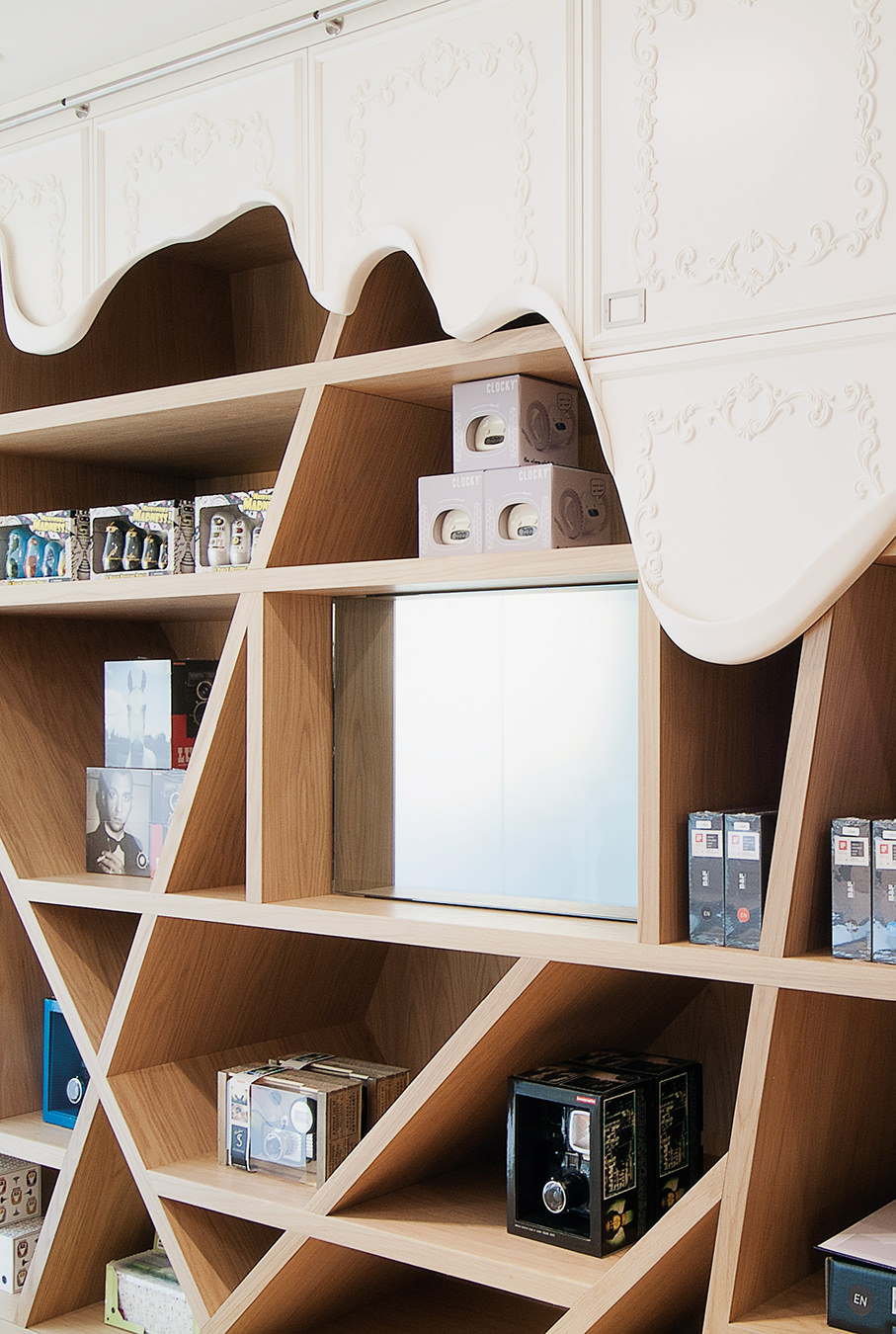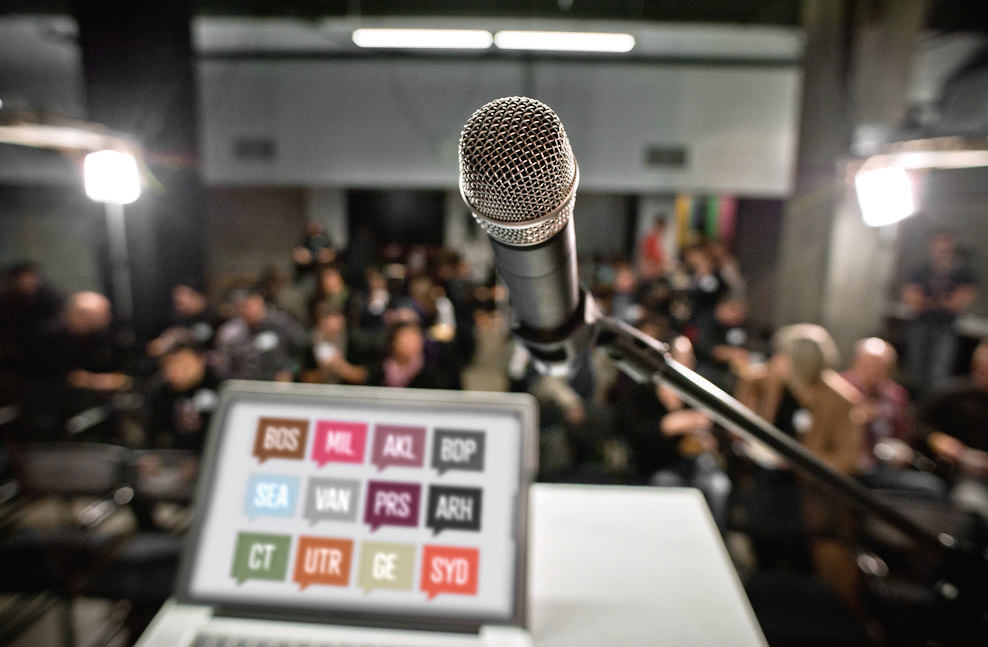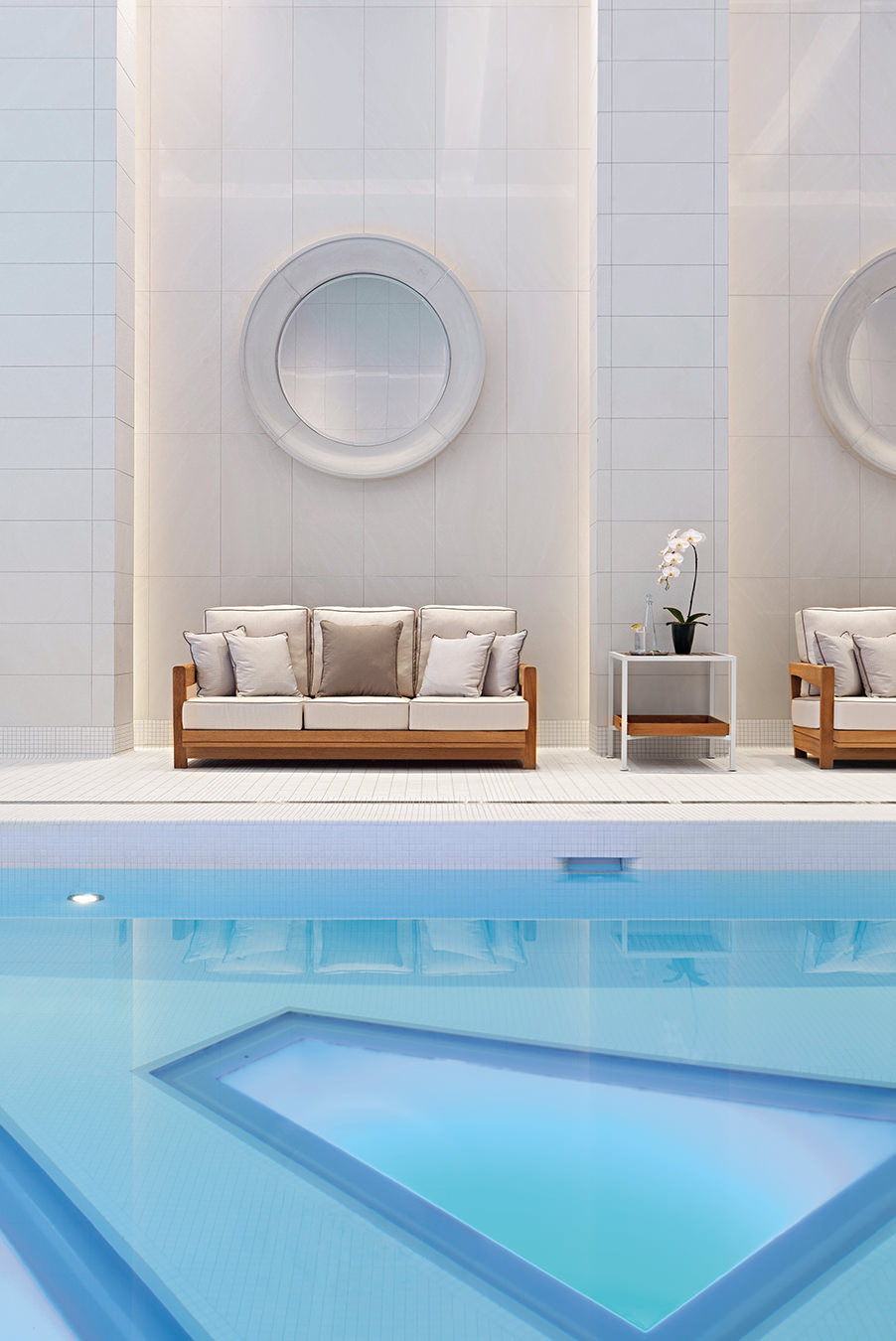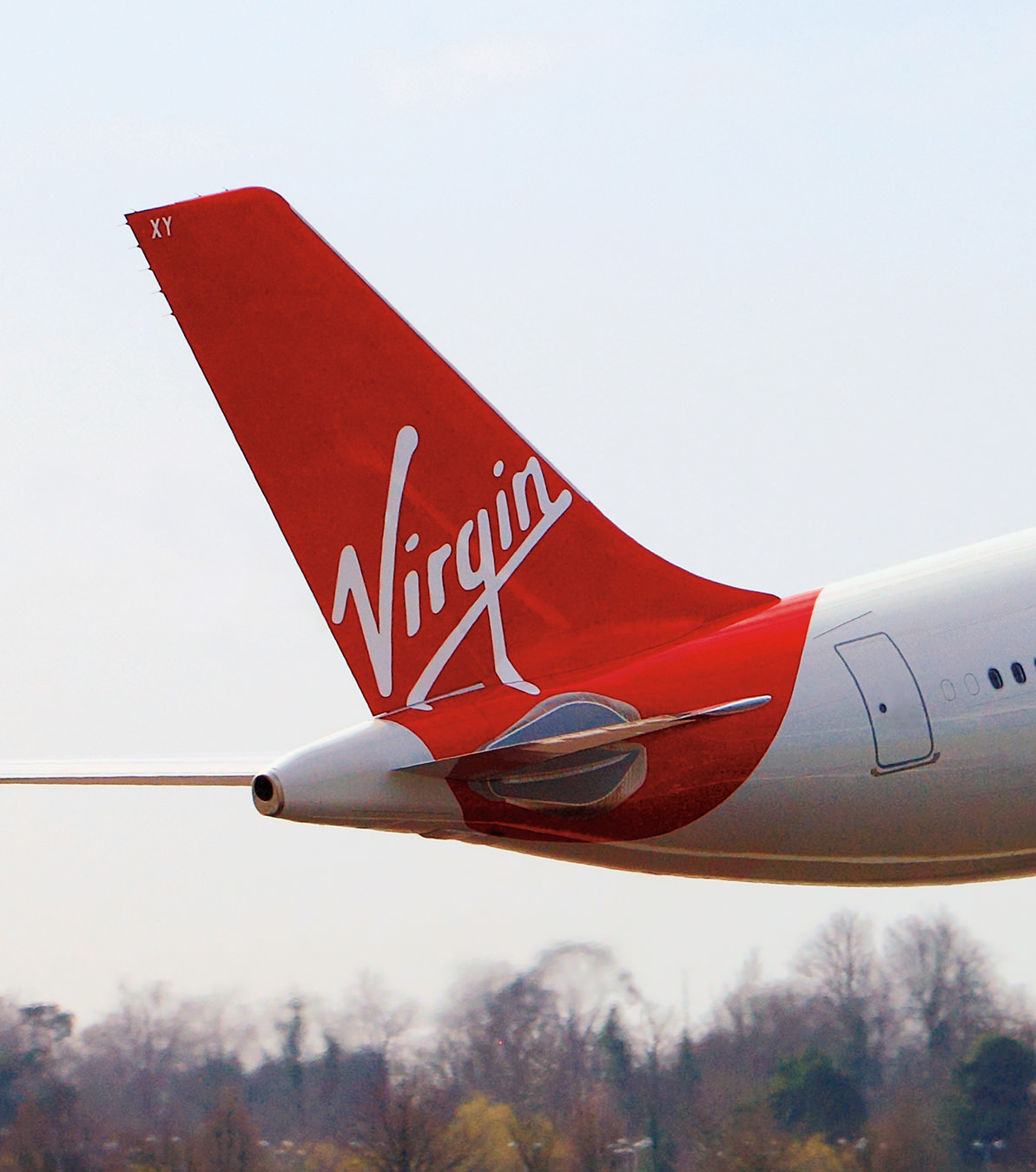Ama by &Daughters, a Sultry Blade Runner-Inspired Enclave
Dusky orange walls and moody lighting set the tone for this Vancouver cocktail and sushi bar.
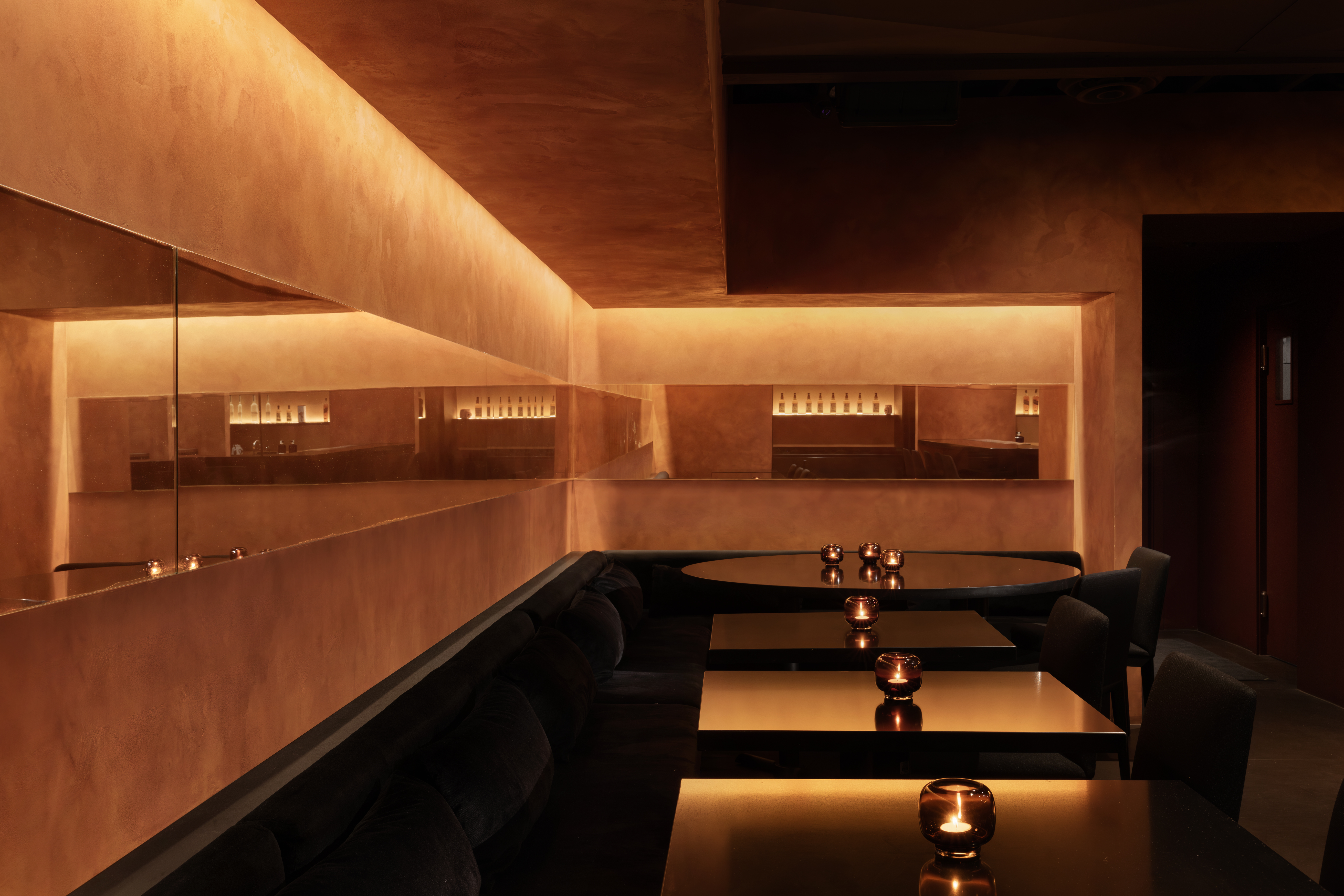
A new cocktail bar, lounge, and raw bar in Vancouver exists in a perpetual state of postapocalyptic predawn glow. Inspired by Denis Villeneuve’s Blade Runner 2049, the 52-seat Ama Restaurant is a sultry enclave tucked away on the second floor of a 1970s walk-up.
Darcy Hanna and Emma Sims of emerging Vancouver design studio &Daughters were initially approached with a grungy, dive-bar-inspired concept for the space. The COVID pandemic waylaid this plan, and when the restauranteurs resurrected it, it was as a moody interior with a seafood-focused menu and a cocktail bar featuring Japanese liquors. The &Daughters mission was to create a design that transported diners into another realm and embodied the feeling of seduction.
Lighting became a starting point for the project—the designers opted to seal the two windows so they could have complete control of the light. “This gave us a blank slate, or really a black box, a theatre upon which we could cast light in a very deliberate way,” Hanna and Sims write in a statement. As they developed an idea for a space that felt hung in a perpetual sunset, they looked to the constant dusky orange haze of Blade Runner 2049 for inspiration.
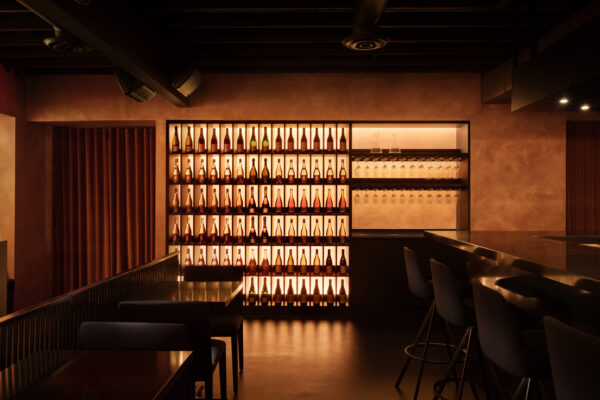
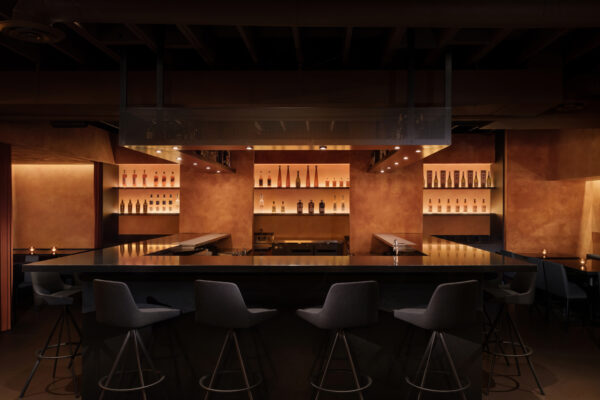
A two-foot bulkhead with recessed lighting runs around the periphery of the dining room, illuminating the orange venetian plaster walls in a warm gradient glow—it’s the only lighting source except for two Panton table lamps. Coves form an entryway bench, back bar, service stations, and private dining area, and a dark-blue banquette follows the north wall, providing most of the dining room seating.
At the centre of the room, a large U-shaped bar is a stage for the culinary and libationary demonstrations. Polished black-granite tops complement the reflective nature of the mirrors, and a perforated metal shelf overhead offers extra storage to maintain the clean lines of the bar. Behind the bar and by the entryway, shelves of sake and liquor bottles in tidy rows are lit from behind for a dramatic display.
On the walls, narrow panels of semitransparent gold mirrors act as art and entertainment. Dark paint covers flaws in the flooring and ceiling and allows the light show happening on the walls to have full effect. The lighting is a favourite aspect of the space for both designers. “For me, it’s a couple of the room’s corners where two coves meet at a right angle and cast a surge of intensified light down the wall,” Sims says. “This cascade of light is bent and amplified by the meeting of two planes of gold mirror that it transects. It’s just such a perspective-warping, mind-bending, otherworldly, and beautiful moment.”
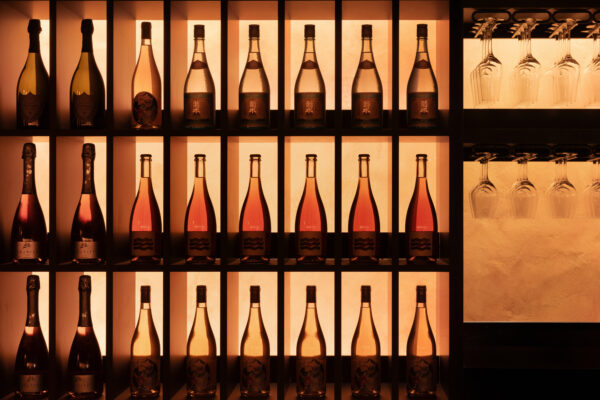
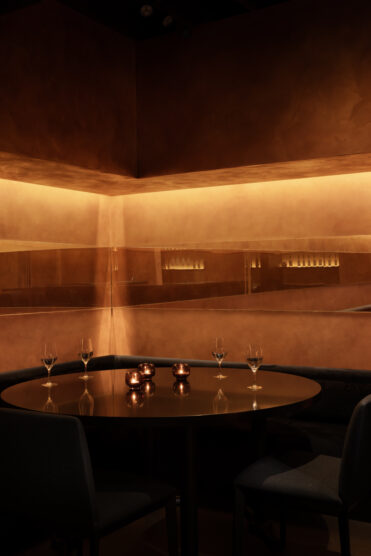
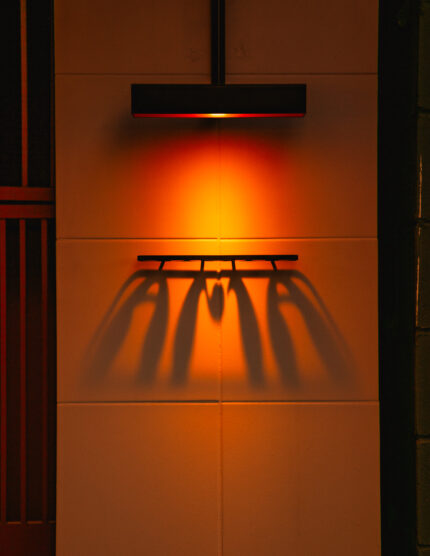
Hanna echoes the sentiment, noting that they treated light as an extension of the material palette. “Trying to elicit the right mood while providing functional lighting for service were requirements sometimes at odds, but ultimately, I believe that we found the right balance and achieved the intended feeling,” she says.
The Ama lighting experience, however, begins before diners step inside. A subtle metal sign, created by local graphic designers Glasfurd & Walker, hangs perpendicular to the wall, spelling out the restaurant’s name in shadows when the light suspended above it is turned on. Visitors go through a coral cage door to enter a narrow stairwell that pays its respect to the name Ama, which refers to the ancient Japanese tradition of female cold-water divers. Clad all in a dark blue, the hallway leads to a lightbox depicting a woman diving deep into the depths of the ocean. Overhead, a bioluminescence- and bubble-inspired chandelier has hundreds of silky fibre optic lights cascading down. The moment of deep-sea tranquillity makes the orangey glow of the dining room even more striking.
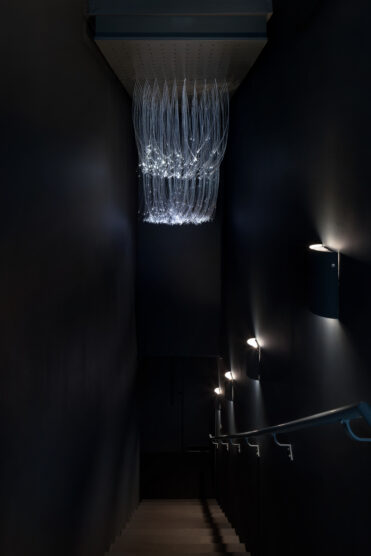

For Hanna and Sims, the feedback they’ve received since the restaurant’s opening at the end of last year has been gratifying. “We have heard from people many times since Ama opened that entering the room is a transportive experience, described as feeling like one has lost sense of time or been transported to another city,” the duo says. “It’s so rewarding to hear this because it confirms that the space is working the way we hoped.”
Photographs by Ema Peter.

